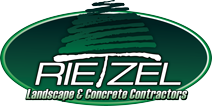Keep a 2-inch layer of mulch around the tree, but not touching the trunk, to prevent moisture loss and protect the tree. It may be necessary to use a wire cage to prevent injury from mechanical devices as well. Protect young trees with a covering of landscape fabric if you live in a very cold climate.
Water small trees regularly and allow them to dry out completely between each watering.
Fertilizer is generally not necessary unless the soil is very unhealthy.
Once the tree is mature, cedar tree care involves little more than regular mulching and removal of dead or diseased branches.
Because stamped concrete is a textured surface, it is often more slip resistant than conventional concrete. However, just like natural stone, it can become slippery when wet or if a film-forming sealer has been applied. If stamped concrete will be installed in a high-traffic area, such as an entryway or pool deck, there are a number of things you can do to increase its slip resistance. Read these tips for improving the slip resistance of stamped concrete.
Can I use salt on it in the winter?
You should avoid using deicing salts on stamped concrete, especially during the first winter after the pavement is installed. Using deicers can cause surface damage—primarily scaling and spilling-by forcing the thawing and refreezing of moisture. Products containing ammonium nitrates and ammonium sulfates are especially harmful because they will actually attack the concrete chemically. Rock salt (sodium chloride) or calcium chloride will do less damage, but they can harm vegetation and corrode metal. As an alternative, use sand for traction. Read How to Maintain Your Concrete Driveway.
When your sod is installed, you should immediately begin watering it twice daily for one week then once daily with an inch of water (about fifteen to twenty minutes) during each session until the sod is rooted in the soil. This should only take a few weeks and is essential for a successful sod lawn. The soil should not ever dry out before the roots grow into the soil.
The best time to water your lawn is during the early morning (6am -9am) or evening (6pm-9pm) and not during the day. This is because less water is evaporated and your lawn will use the water more efficiently. Be aware that watering during the day will not damage your sod, but you may have to water longer.
Mowing: Determine mower timing by height of grass not the calendar. Cut no more than 1/2″ of grass at a time. If you want 3″ grass, wait till it is 3.5″, then mow.
By watering regularly and keeping your new seedlings from drying out you insure the beginnings of a lawn that will make your neighbors green with envy.
A lawn should only be fertilized when it is actively growing. Cool-season grasses such as Kentucky Bluegrass, Tall Fescues, and bentgrasses grow best in our cold climate. They respond well to fertilization after returning from dormancy in the spring and again in the late summer. Avoid applying fertilizers when the grass is dormant because this can promote weed growth.
For established lawns, lime should be applied in either the fall or spring. Do not add lime when the turf is dormant or wilted and do not apply lime during frosty weather.
Water your lawn after applying lime.

